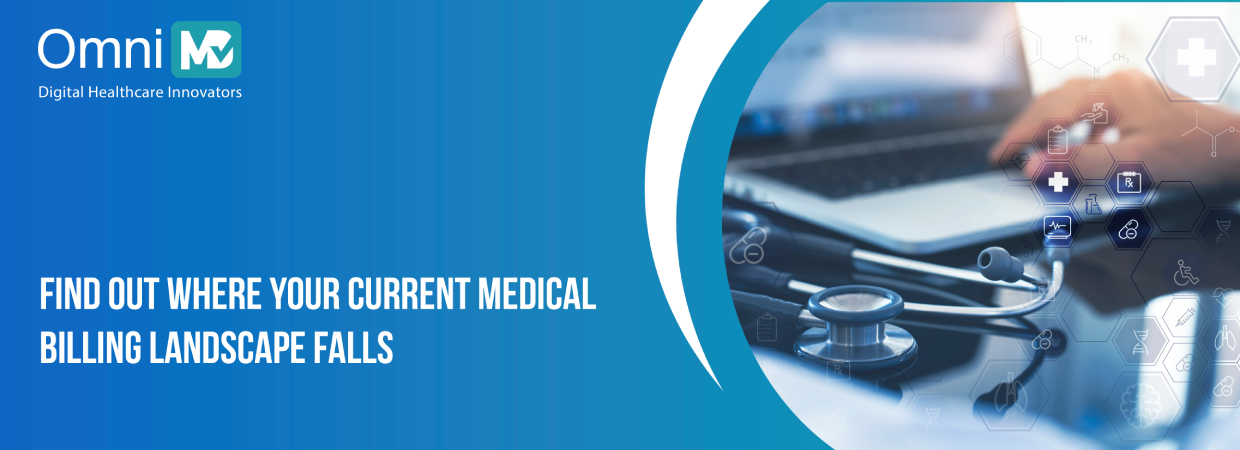A Dive into the Future of Medical Finances
According to the Centers for Medicare & Medicaid Services, total healthcare expenditure is projected to reach $6.2 trillion by 2028. As this inevitability unfolds, the financial outlook of the healthcare industry takes on a contrasting yet increasingly decisive role. While revenue leakages in other industries may affect productivity and profitability, in healthcare, they can have life-altering consequences.
In an era where Agentic AI and human-like intelligence are unveiling endless possibilities, navigating the future of medical finances with precision and care comes with unprecedented complexities. Moreover, with Medicare and Medicaid refining their guidelines to prioritize quality care and patient satisfaction, and private payers adopting performance- and risk-based payment structures, the role of PMS and RCM now extends far beyond generating invoices and collecting payments.
By investigating in and exploring the most untapped areas of medical finances, this blog aims to help you assess your current financial landscape and offers strategic insights to keep your practice at the forefront of coding and billing innovations, driving meaningful and measurable outcomes.
Let’s begin by understanding what lies at the core of medical finances.
Delving Into the Economic Details of Contemporary Healthcare
Medical finances, in their most essential form, refer to maintaining sufficient liquidity to deliver and sustain high-quality patient care. At their core, they involve income generation, capital investment, compliance, and risk and fraud management:
- Income Generation: Healthcare organizations must generate enough income to consistently deliver value-based care. This could involve expanding service lines or adopting technologies like telemedicine and telehealth. Notably, one of the most underexplored revenue streams is ‘data monetization.’ Finance departments can lead by creating ethical and secure frameworks to license anonymized data to pharmaceutical companies, AI startups, and public health agencies willing to pay significantly to improve treatments, algorithms, and policies.
- Compliance: Federal and state medical laws change frequently. Staying compliant is essential not only for maintaining tax-exempt status but also for identifying regulatory trends that signal future investment opportunities. For example, upcoming CMS policies or reimbursement adjustments may point to rising demand for services like behavioral health or remote patient monitoring.
- Capital Investment: Knowing where to invest can keep cash flowing within healthcare settings. Whether it’s purchasing new equipment or implementing operational AI and automation infrastructure across departments, strategic investments can yield some of the highest returns per dollar spent.
- Risk and Fraud Management: Risk management is central to financial stability. By integrating financial data with real-time clinical and operational metrics, finance teams can model future risks before they materialize.
Now, let’s move on to find out where your current billing infrastructure stands and how it stacks up against future-ready financial systems. This assessment is not just about the tools you use; it’s about the workflows they support, the insights they unlock, and the long-term sustainability they create. Let’s break it down.
Where Does Your Current Medical Billing Landscape Fall?
While you might see Medical Billing Software as just a tool, it’s actually a diagnostic lens that reflects your practice’s agility, transparency, and financial preparedness. Your billing ecosystem says a lot about how your clinic operates and whether it’s equipped for future opportunities.
1. Closed Systems: Control Without Clarity
If your revenue cycle:
- Operates entirely within the EHR with no external data exchange.
- Requires staff to manually extract billing data from the EMR.
- Relies on front desk staff to verify insurance eligibility manually.
- Misses claim denials until after submission.
Then your billing is stuck in a data silo loop. While it may feel secure and customized, you’re sacrificing interoperability and missing out on real-time insights, speed, and scalability.
2. Open Systems: Velocity Over Ownership
If you’ve:
- Outsourced billing,
- Connected with clearinghouses,
- Integrated labs or patient portals for billing communication,
You’re working within an open system. However, access doesn’t guarantee alignment. If:
- Your third-party vendor can’t meet your billing KPIs,
- Data flows freely but doesn’t yield actionable outcomes,
- You struggle to spot root causes of denials and rejections,
Then you’re overloaded with data but lacking insight. Open systems may bring scalability and connectivity, but they often compromise control and results.
3. Isolated Systems: Freedom Without Feedback
If closed systems serve providers and open ones serve ecosystems, isolated systems belong to the patient. These patient-led ‘islands’ are rarely discussed in meetings, but they profoundly impact collections, no-shows, and disputes.
If:
- Patients manage payments through third-party apps you’re unaware of,
- Your billing team handles repeated queries like ‘I didn’t see that charge,’
- You provide billing transparency only through your portal, not on patients’ terms,
Then your billing strategy has already diverged from your system architecture. While you promote patient autonomy and decentralization, you lack centralized control and consistency.
What It Takes to Be at the Forefront of Medical Finances and How We’re Leading the Change
Most practices believe they’re doing ‘just fine’, until they realize they’ve been measuring success with outdated tools. If claims go out and money comes in, you’re only scratching the surface of what’s possible. Here’s how to bring the future of medical finance to your fingertips:
Early Adoption of Disruptive Technologies
Embracing disruptive technologies like predictive analytics and machine learning shifts your strategy from reactive error correction to proactive prevention.
Rather than waiting to catch errors post-submission, AI-powered models analyze claims before submission. By learning from historical denial patterns and identifying coding mismatches or documentation gaps, they help shorten the revenue cycle and improve first-pass resolution rates.
What truly sets these technologies apart is their ability to direct workflows in real-time. For example, AI can route complex claims to senior coders or flag specific cases for payer-based adjustments, reducing reliance on manual triage and gradually compounding gains in collections and efficiency.
Fostering a Patient-Centric Billing Ecosystem
Dynamic tools like insurance eligibility verification, cost estimation, and digital payments are reshaping billing into a patient-focused ecosystem. In today’s competitive environment, patients expect transparency. By leveraging payer APIs, fee schedules, and benefits data, these platforms boost pre-service collections and help patients avoid unexpected billing after visits.
Moreover, AI-driven adaptive billing strategies analyze each patient’s payment behavior, such as history, engagement patterns, and preferred channels, to personalize timing and messaging. For instance, a patient who responds best to early email reminders will follow a different communication path than someone who typically pays after a phone call.
Strategically Navigating Regulation and Compliance
Natural Language Processing and rules engines enable dynamic validation of code pairings, NCCI edits, and LCD/NCD alignments. Smart platforms also scan provider notes in real-time, alerting users if selected CPT codes lack necessary documentation (e.g., time, ROS, or physical exam elements).
With constant updates from CMS and commercial payers, these engines ensure your practice stays aligned with current policy. Further, every code adjustment, documentation change, or claim revision is tracked and timestamped, creating a comprehensive, auditable trail.
Anticipating and Proactively Responding to Insurance Companies
The future of billing is not just about compliance; it’s about competitive agility. AI models detect payer-specific behavior, such as Payer X frequently denying Level 4 E&M codes without time documentation or Payer Y underpaying for radiology when no indication is listed. These insights are embedded into pre-submission workflows to optimize reimbursements.
For circumstances where denials do occur, AI systems can auto-generate appeal letters using payer-specific language and prior winning arguments, cutting manual effort and speeding up reimbursement for wrongly denied claims.
Cultivating a Culture of Staff Training and Constructive Feedback
From front desk to coders to AR follow-up teams, every billing role is mapped to measurable KPIs like first-pass success rates, days to payment, and denial rates. Custom dashboards offer real-time visibility into each team member’s performance.
Rather than relying on yearly reviews or generic training, intelligent systems provide just-in-time guidance. If a coder consistently misses modifier 25, the system delivers targeted training or rule explanations exactly when needed, embedding learning into the workflow.
Over time, dashboard trends help identify skill gaps, overworked staff, or high performers, supporting smarter staffing, load balancing, and mentoring programs. This shifts billing teams from task execution to strategic revenue management.
What’s important to recognize is that none of these are isolated improvements. Together, they create a connected intelligence layer that:
- Reduces days in A/R
- Boosts first-pass approvals
- Builds patient trust and increases payment rates
- Minimizes audit risk and compliance gaps
- Transforms your team into a data-powered billing engine
And the best part?
None of this requires a complete overhaul. With our right combination of intelligent systems, modern tools, and a forward-thinking mindset, you’re ready for the next evolution of healthcare finance in no time. Talk to our experts today!
Related Article :

Shape the Future of Medical Finances
Smarter billing. Better care. Stronger growth.

 Written by Neha Singh
Written by Neha Singh
 Reviewed by Shivani Joshi
Reviewed by Shivani Joshi